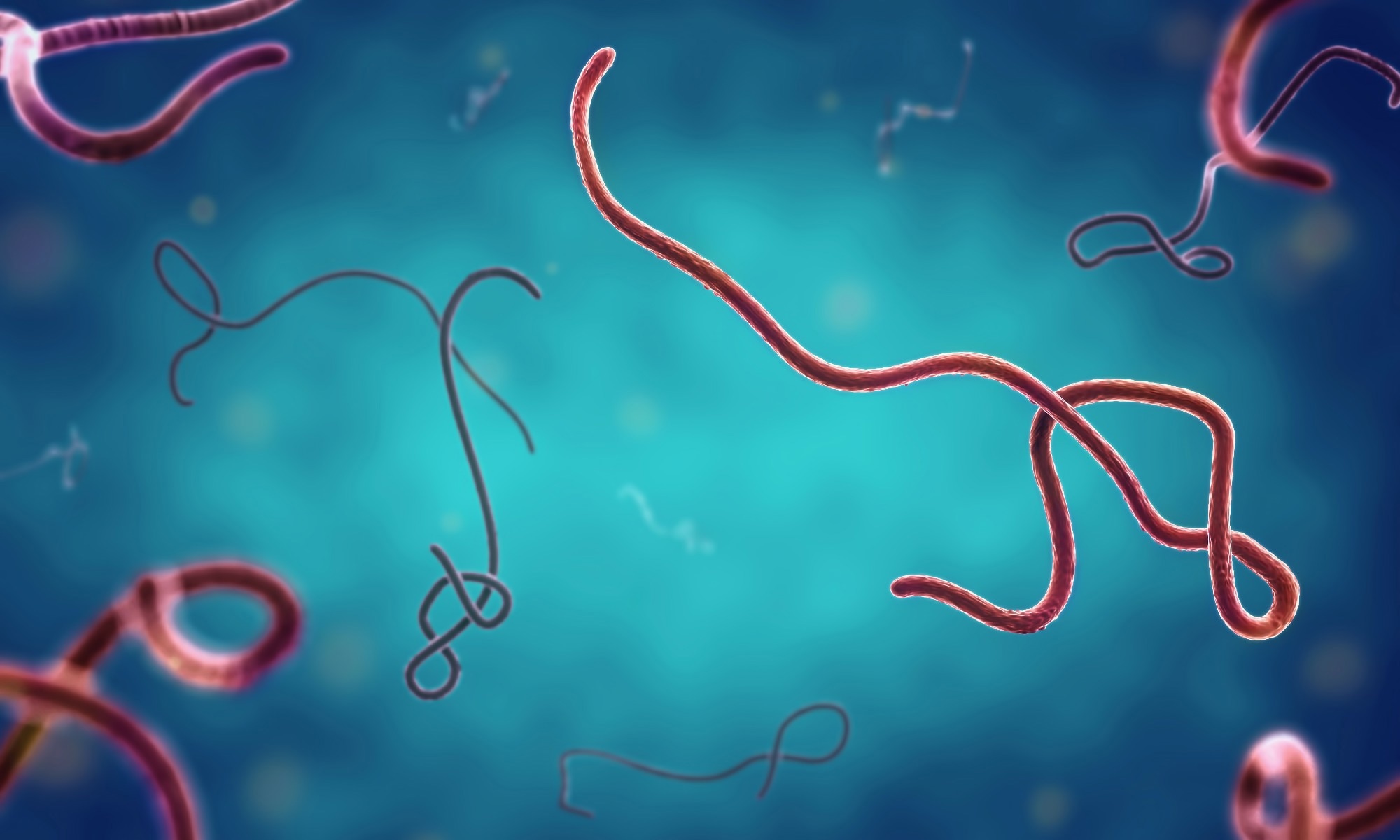In a recent study published in Pathogens, researchers examined how the innate immune system detects filoviruses.
 Study: Filoviruses: Innate Immunity, Inflammatory Cell Death, and Cytokines. Image Credit: ffikretow/Shutterstock
Study: Filoviruses: Innate Immunity, Inflammatory Cell Death, and Cytokines. Image Credit: ffikretow/Shutterstock
Background
Filoviruses are negative-sense and single-stranded ribonucleic acid (RNA) viruses. The most well-known human-infecting filoviruses are marburgviruses and ebolaviruses. Infection can result in life-threatening symptoms, including inflammation, tissue destruction, and hemorrhagic fever, with case fatality rates as high as 90%. The innate immune system is an important first line of defense against pathogenic agents like filoviruses. Yet, filoviruses can influence the host's inflammatory response and innate immune cell death, resulting in an abnormal immunological response.
Sensing components of the innate immune system
The innate immune system has developed the capability to recognize and react to danger- or damage-associated molecular patterns (DAMPs) and pathogen-associated molecular patterns (PAMPs) to protect against infections and cellular disturbances. Germline-encoded pattern recognition receptors (PRRs) like membrane-bound toll-like receptors (TLRs), C-type lectin receptors (CLRs), NOD-like receptors (NLRs), and cytoplasmic retinoic acid-inducible gene-I (RIG-I)-like receptors (RLRs) detect DAMPs and PAMPs. When activated, PRRs trigger innate immune reactions, including the generation of proinflammatory cytokines and interferons (IFNs) and the activation of innate immune cell death to eliminate the infected or injured cell. These steps are essential for the initiation of a comprehensive immune response.
Toll-like Receptors (TLRs)
TLRs include a category of well-defined PRRs that are primarily expressed among innate immunity cells like macrophages, dendritic cells, and mast cells. However, TLRs are also expressed by non-immune cell types such as fibroblasts and epithelial cells. TLRs can also utilize toll/interleukin (IL)-1 receptor (TIR)-domain-containing adapter-inducing interferon-β (TRIF), cytosolic Toll/IL-1 receptor (TIR) domain-containing adaptor protein (TIRAP), and TRIF-related adaptor molecule (TRAM). MyD88, which is a TIRAP, activates transcription factors alongside IL-1 receptor-associated kinase 1 (IRAK1), IRAK2, and IRAK4, along with transforming growth factor-activated kinase 1 (TAK1), tumor necrosis factor receptor (TNFR)-associated factor 6 (TRAF6), and the IKK complex. Additionally, TRAF family member-associated NF-kappa-B activator (TANK) binding kinase 1 (TBK1) can activate other transcription factors.
IFN signaling and RIG-I-like Receptors
Some RLRs are observed in the nucleus, although most RLRs are found in the cytoplasm. RIG-I, laboratory of genetics and physiology 2 (LPG2), and melanoma differentiation-associated factor 5 (MDA5) are the three discovered RLRs in humans. MDA5 and RIG-I possess two N-terminal caspase activation and recruitment domains (CARDs), a C-terminal domain (CTD), and two DExD/H box RNA helicase domains, while LGP2 is devoid of a CARD. In response to an infection, MDA5 and RIG-I recognize viral RNA and release IFNs. RIG-I primarily identifies short single-strand (ss) RNA and double-strand (ds) RNA, but MDA5 selectively detects long dsRNA. Also, RIG-I responds effectively to negative-strand viruses, while MDA5 responds effectively to positive-strand viruses.
Innate Immune Cell Death
Pyroptosis
Pyroptosis is a lytic form of proinflammatory caspase-1-mediated innate immune cell death. Caspase-1 is triggered in response to activation by DAMPs or PAMPs and cleaves the proinflammatory cytokines IL-18 and IL-1-beta along with the pore-forming protein GSDMD. Caspase-1, and consequently pyroptosis, can be induced by creating inflammasomes, which are multiprotein complexes created against a range of stimuli and homeostatic disturbances. Inflammasomes consist of a PRR sensor, caspase-1, and a speck-like protein comprising a CARD associated with the adaptor protein apoptosis (ASC).
Apoptosis
Apoptosis is a crucial cell death process for regulating cell homeostasis. It does not destroy cells or liberate intracellular substances but causes widespread membrane blebbing and contraction. Either the intrinsic or the extrinsic mechanisms can initiate apoptosis. In response to mitochondrial disturbances, intrinsic apoptosis is characterized by the development of an apoptosome, including apoptotic peptidase activating factor 1 (APAF1), cytochrome c, and caspase-9.
Necroptosis
Necroptosis is a type of lytic innate immune cell death mediated by mixed lineage kinase domain-like pseudokinase (MLKL) and receptor-interacting protein kinase 3 (RIPK3) because of the stimulation of TLRs, IFN signaling pathways, and death receptors. The reaction of necroptosis to TNF-α is well characterized. During necroptosis induced by TNF-α, a necrosome composed of phosphorylated RIPK3, phosphorylated RIPK1, Fas-associated death domain protein (FADD), and TNFR1-associated death domain protein (TRADD) forms; more particularly, the physical interaction between RIPK3 and RIPK1 induces the oligomerization and phosphorylation of MLKL, which creates pores in the membrane and initiates cell death. Nevertheless, necroptosis is hindered in the vicinity of caspase-8; hence necroptosis is frequently viewed as a backup to other cell death processes. Caspase-8 cleaves RIPK1, preventing its interaction with RIPK3, inhibiting necroptosis, and promoting apoptosis.
Overall, the study findings showed that filoviruses have varying effects on the innate immune system depending on the stage of infection. Understanding the molecular background of how filovirus proteins engage with innate immune components of the host will improve the medical community's ability to develop effective therapeutics, determine when to administer them, and reduce the high case fatality rate attributed to this RNA virus group.